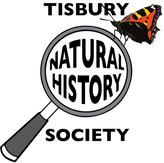|
There are more than 35 native species of fern growing in the UK, some of which can be found locally, such as maidenhair spleenwort and hart’s-tongue fern. However, the most easily recognisable is bracken, which by July has grown to its full height, up to six feet tall.
Its name originates from the Old Norse and even today the Swedish use the word ‘braken’ meaning fern. Bracken grows where the soil is rich and has a close association with woodland, so often on hillsides and moors, for example, bracken betrays the past existence of woodland. I recently visited the Welsh island of Skomer and observed how bracken is widespread there. There aren’t any trees on the Island and have not been for many hundred of years. Other woodland indicator species there include carpets of bluebells and wood-sage. Individual bracken plants have been known to cover as much as 3 acres, because the rhizomes (creeping underground shoots) spread over a wide area at a speed of over a metre per year. If uncontrolled, bracken can dominate the ground flora, build up a thick mat of dead material, and restricts grass available for animals. But where grazing animals keep paths open it can be an important butterfly habitat. For example, on lower slopes of Dartmoor, it is the last refuge for several rare species of butterflies including the high brown fritillary, small pearl-bordered and pearl-bordered fritillaries which needs dog violets growing in these sunny warm areas. Bracken is normally avoided by animals, but if short of other food and forced to consume it, it can cause cancer. The spores are also poisonous, so bracken is best avoided in the late summer, when they are released. Also, bracken stands are the ideal habitat for sheep ticks, so beware! by Andrew Graham Comments are closed.
|
Photo: Avocets (Izzy Fry)
The headers display photos taken by our members. Do get in touch via the Contact Form if you'd like to submit a photo for selection.
Archives
May 2024
Categories
All
|

 RSS Feed
RSS Feed